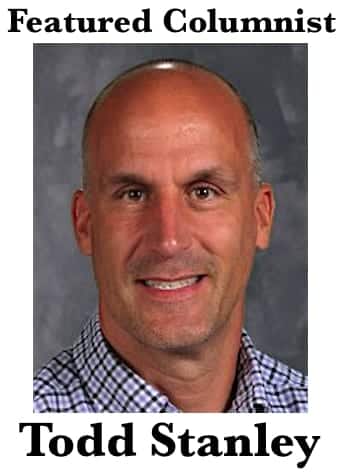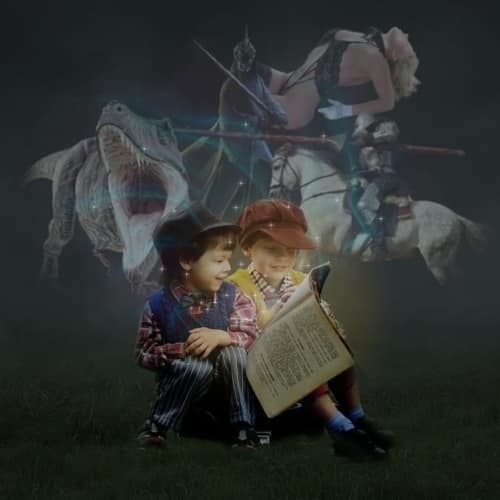Why don’t gifted services continue at the high school level?  The way many gifted services work across the nation is that if a school or district has gifted programming, it is focused in the younger grades. Very rarely is there gifted-specific programming at the high school level. Instead, we rely on nationally recognized programs such as Advanced Placement (AP) and College Credit Plus (CCP) to fill the need for rigor and challenge. While these courses are certainly more rigorous than your typical high school class, they are not specific to the needs of gifted students. Even if they were, they would only be meeting the academic needs of the students. What of their social/emotional needs?
The way many gifted services work across the nation is that if a school or district has gifted programming, it is focused in the younger grades. Very rarely is there gifted-specific programming at the high school level. Instead, we rely on nationally recognized programs such as Advanced Placement (AP) and College Credit Plus (CCP) to fill the need for rigor and challenge. While these courses are certainly more rigorous than your typical high school class, they are not specific to the needs of gifted students. Even if they were, they would only be meeting the academic needs of the students. What of their social/emotional needs?
 The other impediment for gifted learners in high schools is that many high school teachers have a traditional style in the classroom, standing in front of the students and talking at them. They are the disseminators of information, the sage from the stage, the content expert. If you don’t believe me, go into most any high school and see how the desks are situated in the classroom. I would bet a majority are lined up in symmetrical rows, all pointed toward the front of the classroom where the teacher’s desk sits. This drill and kill style of teaching has been proven to not be the most effective method of reaching students, especially gifted ones, and yet it continues.
The other impediment for gifted learners in high schools is that many high school teachers have a traditional style in the classroom, standing in front of the students and talking at them. They are the disseminators of information, the sage from the stage, the content expert. If you don’t believe me, go into most any high school and see how the desks are situated in the classroom. I would bet a majority are lined up in symmetrical rows, all pointed toward the front of the classroom where the teacher’s desk sits. This drill and kill style of teaching has been proven to not be the most effective method of reaching students, especially gifted ones, and yet it continues.
The problem with solely using AP and CCP as band-aids for the needs of gifted students is that they typically are using this traditional method of teaching where a lot of material needs to be covered in what seems like a short period of time. As a result, there is a lot of focus on surface level learning such as rote memorization and traditional methods of assessment. Unfortunately, these methods do prepare students for many of the AP exams and college entrance exams students must take in order to advance in their education. They do not prepare students, however, to figure out things for themselves in the real world nor do they necessarily stretch one’s thinking.
These traditional strategies are not the best methods to challenge gifted students or any student for that matter. Instead, authentic strategies such as Inquiry learning, Project-based learning, Problem-based learning and Case-based learning are far better suited for high-ability students. Let the students be the content experts, let them figure out how to learn something on their own. This is how young people learn best. Just turn to YouTube for proof. There are millions of do-it-yourself videos by kids showing other kids how to make jewelry, learn to play an instrument or cook a meal. Kids can get on and learn for themselves.
 These methods of teaching allow students to learn for themselves rather than having it spoon-fed to them by the teacher. They also are engaging and challenging at the same time. They teach students not just the content, but how to find that content and use it best. This way, whether that student retains that content or forgets about it, they still possess the skill of knowing how to learn.
These methods of teaching allow students to learn for themselves rather than having it spoon-fed to them by the teacher. They also are engaging and challenging at the same time. They teach students not just the content, but how to find that content and use it best. This way, whether that student retains that content or forgets about it, they still possess the skill of knowing how to learn.
A lot of these strategies as well as station rotation, blended-learning and hands-on activities are abundant in the lower grades. You walk into an elementary or middle school and kids are actively engaged. Could you imagine a 2nd grade teacher trying to give kids a one hour lecture? Those kids would be rioting after fifteen minutes. Probably ten. Not only that, because elementary and middle school teachers are often teaching more than a single subject, there is a lot of cross-curricular learning taking place. Teachers at this level are not content experts, they are engagement experts.
I am aware of the counter argument many high school teachers would propose. I was a high school teacher at one time. When you have 150 students throughout the course of a single day, management and survival are your main goals. These traditional methods allow a teacher to better maintain order and discipline. But order and discipline shouldn’t be the main goal of a school. It should be student learning.
Other high school teachers might argue they are getting students ready for college where they will be lectured to and given exams worth half their grade. If a teacher takes this approach he is indeed getting students ready for college. The bad news is the college he is getting them ready for is the same one the teacher attended when he was an undergraduate ten or twenty years ago. Colleges have adapted to the new research of learning and recognize the importance of independent work, group collaboration and student engagement. Many colleges have forgone exams for research paper, presentations, projects or other performance assessments.
Because high school teachers are such content experts, it is difficult for them to be open to learning new things. After all, they are the one who knows the most about their content, and no one is disputing that. However, teaching strategies are not content specific. Blended learning could work in a theatre class, Trigonometry, or World History.
 The main advice for high school teachers is to remain open minded. To recognize that even though you might be the content expert of your subject, you are not necessarily the strategy expert. There is always room to learn. If we expect this of our students, we should expect it of ourselves. If there is anything I have learned after twenty years in education, it is that I still have a lot of learning to do.
The main advice for high school teachers is to remain open minded. To recognize that even though you might be the content expert of your subject, you are not necessarily the strategy expert. There is always room to learn. If we expect this of our students, we should expect it of ourselves. If there is anything I have learned after twenty years in education, it is that I still have a lot of learning to do.
School systems also need to do a better job of creating a continuum of services for their gifted population. You cannot have programming in the middle school and junior high only to yank it back once students reach high school. As my superintendent so wisely said to me, “if their services go away, their needs do not.” There needs to be programming at the high school level, even if it is just a bridge to AP and CCP which students usually do not take until their junior year. The transition to high school is difficult as it is. Imagine students trying to deal with these growing pains. There needs to be programming in place to help them adjust and make sure both their academic and social/emotional needs are met.
Author
Todd Stanley is the author of several education books including Project-Based Learning for Gifted Students and Performance-Based Assessment for 21st-Century Skills, both for Prufrock Press.
Additionally, he wrote a series of workbooks for them entitled 10 Performance-Based Projects for the ELA/Math/Science Classroom. He wrote Creating Life-Long Learners with Corwin Press and is a regular contributor of blogs to Corwin Connect which can be accessed at https://corwin-connect.com/author/toddstanley/.
You can find out more about Todd at MyEdExpert.com.
Further Reading
- VeryWell – Top Ways to Nurture Gifted Children
- Huffington Post – From Perfection to Personal Bests: 7 Ways to Nurture Your Gifted Child
- edCircuit – “Rigor” and “Hard” Are Not The Same Thing


